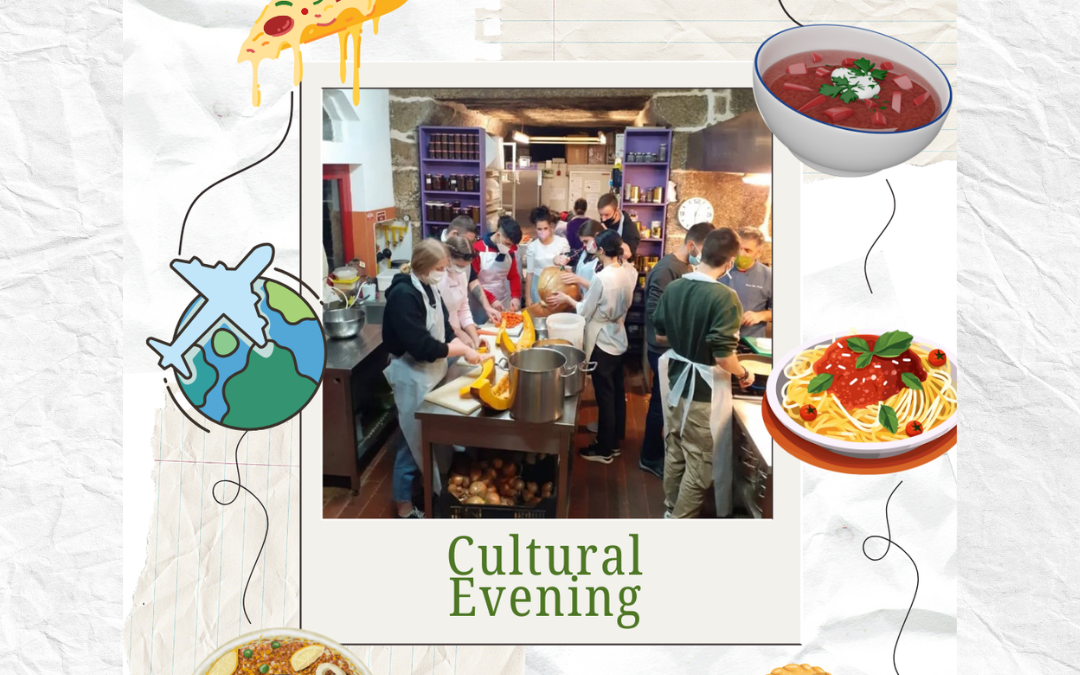Are you sitting there scratching your head because everyone is bored with Kahoot and the ‘cultural evening’ in your Erasmus project is coming up? It’s understandable. Everyone in this situation gets lost at first.
A cultural evening is a personal opportunity to open the whole world to others. Your world.
7 steps to turn your presentation into something unforgettable:
- National costumes. Bring a special wardrobe item from home – a Portuguese scarf, Bulgarian embroidery, or a Lithuanian hair ornament. Such details often tell you more about a culture than an hour of explanation and give you the opportunity to touch the history in the truest sense of the word.
- The music of your land. You don’t have to bring a Greek bouzouki or an Irish bagpipe. Even a recording of a lullaby your mother used to sing to you can give listeners on the other side of Europe goosebumps.
- Forget about boring statistics. Instead, tell us how it takes hours to cook paella in your country, why they still believe in trolls in your region, or why none of your friends get married during a certain month because of superstition.
- Personal stories. The time you and your friends got lost in the mountains and were taken in by a local family? Tell us about it. When did a city child first see how French cheese is made in the countryside? Share. Such stories create bridges between cultures.
- Food from home. If you can bring something authentic, it’s great – but think about what will survive your trip to the venue! Spanish jamón, Dutch aged cheese, Greek olives, or homemade sweets that won’t melt or crumble work best. Remember that many people may not eat pork, cheese, or meat due to dietary restrictions or religious reasons, so bringing something that doesn’t include these ingredients is always thoughtful and inclusive. Here’s a clever tip: everyone brings sweets, so you’ll catch a lot of attention with something salty! Authentic crackers, nuts, or savory snacks from your country will definitely stand out.
- Cooking on site. Sometimes the best way to share a culture is to roll up your sleeves and do something together. Cooking Swedish meatballs or Turkish baklava with a team of international students? They’ll remember it for the rest of their lives. Again, consider ingredients that work for various dietary needs – vegetarian options are usually a safe bet.
- Show the movement. Teach others at least the basic steps of a folk dance. Flamenco, polka, or even modern moves from TikTok trends popular in your country. Don’t know how to dance? Then play a game. Any childhood game from your childhood is easily transferred to the international environment.
The most important thing is not to turn it into a dry lecture. Your own interest and sincere admiration for your culture will infect others. What if you find someone who is so interested in your country that they decide to learn your language? Or come to visit?
Besides, cultural evenings are a two-way process. While you share yours, open yourself up to the perception of others. Perhaps Greek dance or Hungarian goulash will become part of your life after the project.
And you know what’s the most interesting thing? It is often at such evenings that you begin to appreciate your own culture in a new way. Seeing it through the eyes of others is an invaluable experience.

